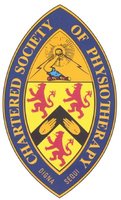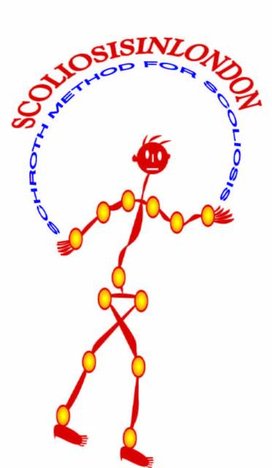Joanna Słup
MSc, MCSP, HCPC
Scoliosis Physiotherapy Consultant
Expert in Exercises for 3D Spinal Deformities
SCOLIOSISINLONDON
Clinic
for scoliosis and spinal deformities
SCOLOSIS SOSORT
SOSORT (the Society on Scoliosis Orthopaedic and Rehabilitation Treatment) is an international scientific society interested in spinal deformities, including idiopathic scoliosis (IS). One of the main tasks of the society is to provide diagnostic and therapeutic recommendations for all professionals in the conservative treatment of patients with IS. Idiopathic scoliosis is a deformity of the spine, which is associated with a translation and rotation of vertebrae. The term idiopathic scoliosis is applied to all patients in which it is not possible to find a specific disease causing the deformity; in fact, it occurs in apparently healthy children and can progress in relation to multiple factors during any rapid period of growth. Progression is more common in girls during the growth spurt at puberty, and then, it is called progressive idiopathic scoliosis. After approximately 2/3 of the period of pubescent growth spurt, girls experience menarche, which indicates that the peak of growth has been passed, with a gradual decrease in the risk of scoliosis progression. There is a much lower potential for progression of idiopathic scoliosis after the spinal growth is complete.
The etiology of scoliosis has not been fully elucidated. The development of idiopathic scoliosis has a multifactorial origin. The role of genetic factors in the development of scoliosis is confirmed by the tendency of scoliosis to run in families. A prognostic genetic test can help predict the risk of idiopathic scoliosis progression. This test analyses 53 genetic markers correlated with spinal curve progression in adolescent idiopathic scoliosis.
The following factors are determinants of a higher risk of scoliosis progression: positive family history, flattening of physiological thoracic kyphosis, angle of trunk rotation exceeding 10 degrees, growth spurt and the joint hypermobility.
When scoliosis is left untreated, it may lead to severe trunk deformities, which limit functional biomechanics of the chest, exercise capacity, general fitness and ability to work.
There are two treatment options of scoliosis: conservative and surgical treatment.
The main purpose of the conservative treatment (bracing and physiotherapy) is to stop the progression of the curvature. The aim of the therapy is to improve the quality of life, improve the aesthetics and physical capacity. An important element of the conservative treatment is the physiotherapy, which can be used as independent part of treatment and as a support of brace. SOSORT recommends the use of physiotherapy in the form of Physiotherapeutic Specific Exercises,which must have confirmed efficacy according to the requirements of the Evidence Based Medicine. Moreover, the therapy should be selected individually and include:
1. three-dimensional auto-correction of deformation.
2. training in activities of daily living.
3. stabilizing the corrected posture.
4. education of the patient and her/his parents.
Brace treatment
Bracing is recommended to treat adolescent idiopathic scoliosis. Also, bracing is recommended to treat juvenile and infantile idiopathic scoliosis as the first step in an attempt to avoid or at least postpone surgery to a more appropriate age. The use of brace is recommended in patients with evolutive idiopathic scoliosis above 25 degrees during growth. It is recommended not to apply bracing to treat patients with curves below 15 degrees. Bracing is recommended to treat patients with curves above 20 degrees (25 degrees) Cobb angle, still growing (Risser 0 to 3), and with demonstrated progression of deformity or elevated risk of worsening. It is recommended that braces are worn full time or no less than 18 hours per day at the beginning of treatment. However, for many children with scoliosis wearing a brace can be a stressful experience and bracing can affect their quality of life.
Katcharina Schroth Method in Germany
Scoliosis and joint hypermobility
Hypermobility means that joints are more flexible than normal and that move in excess of a normal range of motion. The exact cause of hypermobility is unknown, but it tends to run in families. Hypermobility syndrome is estimated to affect between 10 % — 25% of the population.Hypermobility may be associated with muscle and joint pain, Joint hypermobility appears more often in children with idiopathic scoliosis than in healthy children. For this reason, children with idiopathic scoliosis should have assessment of joint laxity before starting treatment for scoliosis. Recommended exercises for children with joint hypermobility syndrome: strength exercises, stability exercises, proprioception and balance exercises. Exercises aimed at increasing joint mobility should not be used as they may be harmful.
The most common tissue disorders associated with hypermobility are: Ehlers-Danlos syndrome and Marfan syndrome.
Ehlers-Danlos syndrome - is a connective - tissue disorder characterized by hyperelasticity of skin, joints and other soft tissues. This syndrome causes loose, fragile skin and tendons and hipermobile joints. Patients with Ehlers - Danlos syndrome often suffers from scoliosis and dislocation or sprains of the joints.
Marfan's syndrome
Marfan's syndrome is a hereditary condition that affects connective tissue. Patients with Marfan's syndrome have a very typical appearance. They are tall and slim with very long arms, legs and fingers. They have loose and very flexible joints and flat feet. Many patients with Marfan's syndrome have some type of vision problem. Also, this condition can affect the cardiovascular system. Marfan's syndrome is associated with scoliosis. Some believe President Abraham Lincoln also had Marfan's syndrome.


